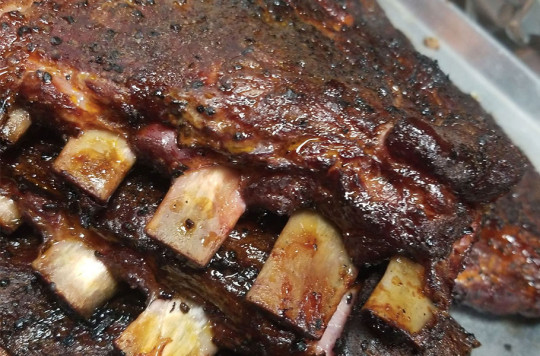Writing about Black history can be a daunting task. You can’t discount how those of African descent made it to these shores. You can’t avoid the contributions black and brown-skinned people made to making America what it is today. All the while, trying to educate in a tone that isn’t antagonistic. Nonetheless, without the free labor provided by slaves from the 17th century until the late 19th century, chances are the country takes a little longer to achieve some of the advances it accomplished. Go beyond the very tangible evidence of the Middle Passengers and their descendants influence on American society, you will also find some more subtle ones like childcare and homemaking that fell on their shoulders. It’s in their homemaking that some of the longest-lasting effects can be felt – in food.
The phenomenon of immigrants bringing food from their native countries or adapting traditional recipes to ingredients found in their new home isn’t anything new to us. The United States, being the melting pot that it is, reflects this in innumerable ways. There are pockets of large cities dedicated to cultural groups and bear names like Little Italy, Chinatown and Little Havana. In them, plenty of dishes that were integrated from their homelands exists. Early America was no different – albeit what might be called “Little Africa” was not cutely named nor a pleasant experience. Rice, okra and beans were among the things that were brought on ships to nourish slaves. These African staples, along with hearty greens and the use of animals from head-to-tail, went on to be the foundation for much of food consumed by many across the Antebellum South. It is now aptly referred to as soul food.
Nowadays, soul food and Southern cooking are just about synonymous. And people from various backgrounds share their own take. Before Alton Brown, Marcus Samuelsson and the Neelys spreading the Southern gospel, the likes of Abby Fisher and Rufus Estes went from servitude to the publishing houses. Or in the case of Edna Lewis, from her emancipated grandfather’s community in Freetown, VA to national prominence. It is from her book The Taste of Country Cooking that we draw our recipe from today.
Many of Edna’s recipes are based on the time-honored method of cooking what was available to the residents of the community, often scraps left over for them or through what the ground yielded. Along with the food prepared for the “big house,” the slaves that worked in the smokehouse would prepare the “undesirable” parts of pigs for themselves, including ribs, head, feet and innards. Combining their preservation methods with their penchant for using spices and vinegar to mask the poor quality add flavor to these “lesser” cuts, pork was a staple food. Hmm, spices, vinegar, pork, smoke? Sounds like North Carolina barbecue.
This pan-braised spareribs recipe falls under ‘winter.’ As an avid rib consumer, trust me when I say, you are welcome to try this out any time of year.
Pan-Braised Spareribs
Serves 4 to 5
(Note from the book’s author: When purchasing spareribs try to get them without the tips – that is the meaty part of the bottom of the ribs. Most often it is too tough and requires longer cooking than the rest of the ribs. Have the butcher cut away the tips and crack the ribs through the middle but not into two pieces)
3 pounds spareribs
Marinade:
3 tablespoons brown sugar
5 tablespoons honey
2/3 cup soy sauce
1 teaspoon salt
6 tablespoons sweet sherry
1/2 cup strained chili sauce
1/2 tablespoon finely chopped fresh ginger root
1 or 2 cloves garlic, crushed
Glaze:
1/4 cup soy sauce
1/4 cup honey
Mix marinade ingredients together well.
For best results, cook spareribs first by parboiling (or try this). Place the ribs in a rectangular pan with just enough water to be level with the ribs, simmer just until tender, about 1 1/2 hours. Remove ribs from pan and cool. When cool enough to handle, brush each piece of spareribs over with the marinade. Place in a deep dish and leave to marinate for 1 hour, no longer. The spices will break down if held longer.
Preheat oven to 425 degrees. Lay the sheets of spareribs on a wire rack in a baking tray or dish. Place the tray into the oven and immediately lower the heat to 350 degrees. Cook for 20 minutes to make them crisp. Remove and cut into serving portions.
Today, talented Black chefs populate kitchens around the country and they’re not beholden to just producing Southern food. In Philly alone, we have establishments run by Chad Williams, Kenny Bush and a slew of others as they take up the mantle and continue to pour their hearts into food the way it has always been done in our community.
Stop by COOK to pick up your copy of Edna’s book, and be sure to let us know if you tried out the recipe.
Back to Blog



